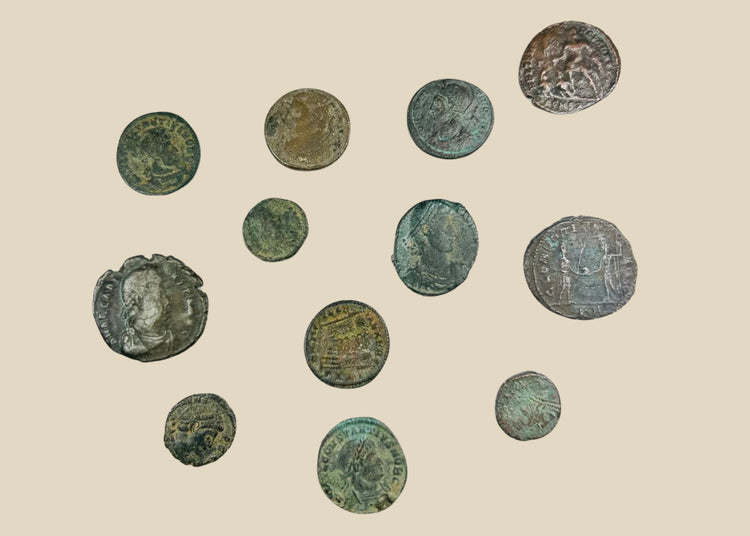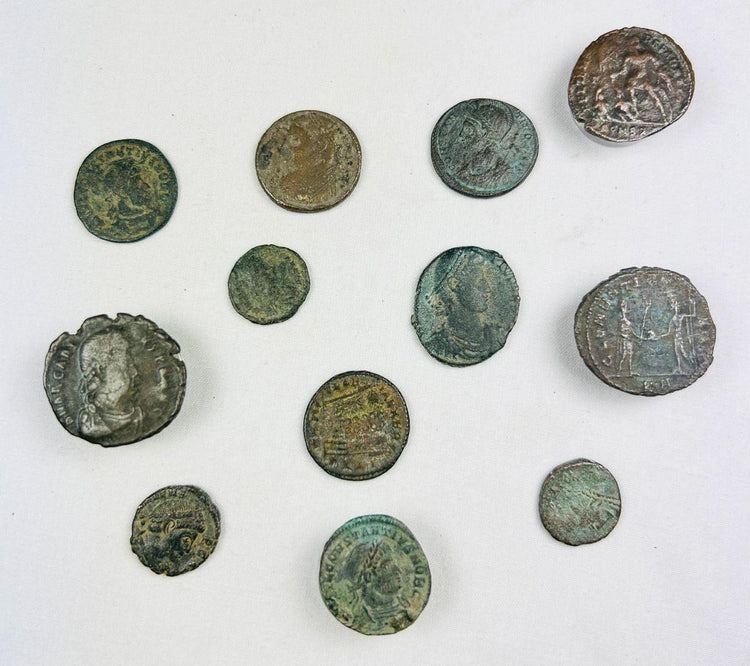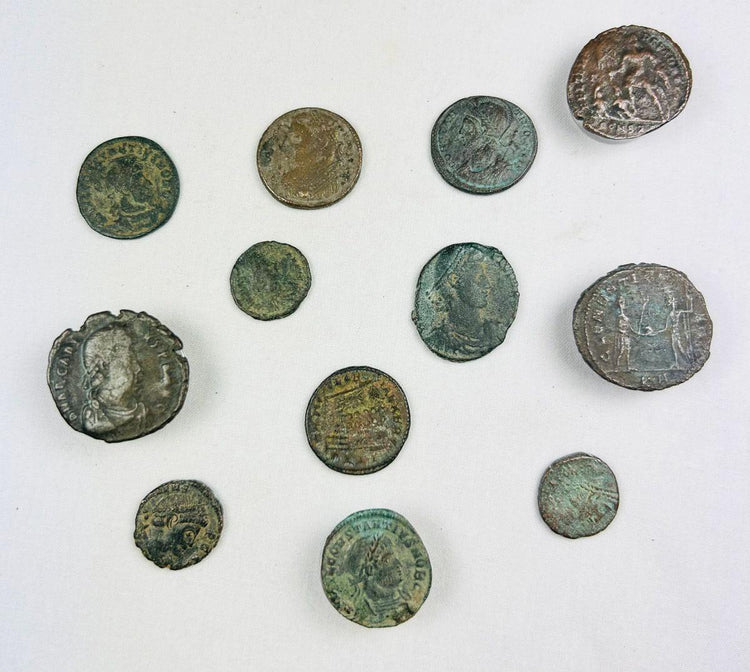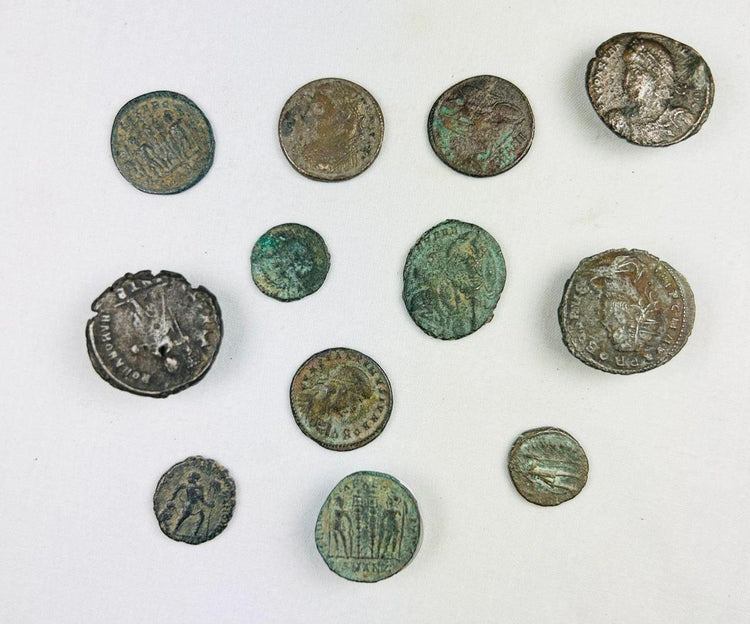Collection of 12 Ancient Roman Coins | Bronze & Billon with Imperial Portraits & Deities | 2nd–4th Century AD
Description
More
Less
Historical Context & Origin
Region: Imperial Roman Empire
Material: Bronze and billon (bronze with silver content)
Period: 2nd–4th Century AD
Description
This collection of twelve Ancient Roman bronze coins originates from the height of the Roman Empire, a period marked by vast territorial expansion, thriving trade networks, and cultural dominance across Europe, North Africa, and the Middle East. These coins served not only as instruments of commerce but also as powerful tools of imperial propaganda, carrying portraits of emperors and imagery that emphasized divine favor, military victories, and civic prosperity. Examples in this group likely circulated during the reigns of emperors such as Marcus Aurelius, Constantine the Great, and others who shaped Roman history. The coins vary in denomination and type, with both obverse and reverse details partially preserved, including imperial busts, deities, and military symbols.
Features
- Distinct imperial portraits, often laurel-wreathed or helmeted
- Reverse imagery including deities, soldiers, and standards
- Latin inscriptions, some partially legible, denoting rulers and honorifics
- Natural green and brown patina from burial and exposure
- Mixed denominations including possible follis and antoninianus types
Cultural Significance
Roman coins were more than currency—they were a means of communication and political legitimacy across the empire. Their wide circulation spread the emperor’s image to even the most distant provinces, reinforcing authority and unity. Coins also served in religious and ceremonial contexts, being offered at temples or hoarded for protection and prosperity. This collection represents not only the economy of Rome but also the daily lives and beliefs of its people.
Condition
The coins are in good excavated condition with surfaces showing natural burial patina. They exhibit varying degrees of wear from centuries of circulation, with some portraits and inscriptions remaining sharp while others are softened. A mixture of green, brown, and earthen tones has developed across the surfaces, enhancing their ancient character. All twelve coins remain stable, structurally intact, and display well as a group.
Dimensions (approximate)
Diameter range: up to 1 in
Age
Estimated 1,600–1,800 years old
Description
Historical Context & Origin
Region: Imperial Roman Empire
Material: Bronze and billon (bronze with silver content)
Period: 2nd–4th Century AD
Description
This collection of twelve Ancient Roman bronze coins originates from the height of the Roman Empire, a period marked by vast territorial expansion, thriving trade networks, and cultural dominance across Europe, North Africa, and the Middle East. These coins served not only as instruments of commerce but also as powerful tools of imperial propaganda, carrying portraits of emperors and imagery that emphasized divine favor, military victories, and civic prosperity. Examples in this group likely circulated during the reigns of emperors such as Marcus Aurelius, Constantine the Great, and others who shaped Roman history. The coins vary in denomination and type, with both obverse and reverse details partially preserved, including imperial busts, deities, and military symbols.
Features
- Distinct imperial portraits, often laurel-wreathed or helmeted
- Reverse imagery including deities, soldiers, and standards
- Latin inscriptions, some partially legible, denoting rulers and honorifics
- Natural green and brown patina from burial and exposure
- Mixed denominations including possible follis and antoninianus types
Cultural Significance
Roman coins were more than currency—they were a means of communication and political legitimacy across the empire. Their wide circulation spread the emperor’s image to even the most distant provinces, reinforcing authority and unity. Coins also served in religious and ceremonial contexts, being offered at temples or hoarded for protection and prosperity. This collection represents not only the economy of Rome but also the daily lives and beliefs of its people.
Condition
The coins are in good excavated condition with surfaces showing natural burial patina. They exhibit varying degrees of wear from centuries of circulation, with some portraits and inscriptions remaining sharp while others are softened. A mixture of green, brown, and earthen tones has developed across the surfaces, enhancing their ancient character. All twelve coins remain stable, structurally intact, and display well as a group.
Dimensions (approximate)
Diameter range: up to 1 in
Age
Estimated 1,600–1,800 years old
You May Also Like




















